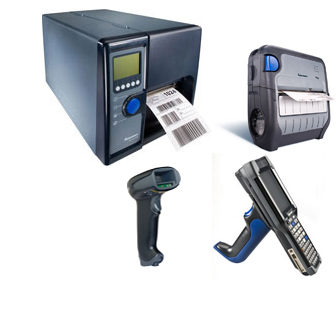Desktop Printing Made Easy with Honeywell’s PC42t
With over 4 decades of barcode printer design behind it, Honeywell’s PC42t is the easiest to use and most affordable printer on the market today. With a 4.3″ print width and its compact size, the PC42t is the most reliable solution for a small or medium business looking to improve productivity in label making operations. It is also the easiest printer for those looking to deploy thermal label printing for the first time, or for those transitioning away from more expensive inkjet- or laser-based label printing methods.
Easy to install and ready to print quickly, the PC42t supports a wide range of media and features a quick-opening design for easy media replenishment. The PC42t also offers industry-standard connectivity with USB, Ethernet, parallel and serial interface options.
Case Study: Automotive Manufacturing with Honeywell Solutions
A global automotive parts manufacturer whom specializes in parts and accessories for the productions of cars. With a keen focus on just-in-time inventory, they focus on building customer relationships by setting the right expectations and aiming to over-deliver. Delivering a great customer experience hinges on the companies flawlessly tracking of products from production, finished good delivery and ensuring that their customers inventory levels are optimized. By utilizing Honeywell printers, scanners and mobile computing products, our customer has been able to increase their service level commitments and gain trust from automotive manufacturers around the globe.
The Business Challenge
The Company was expanding and needed a data capture solution that enabled its workforce to optimize their productivity, mobility and product traceability. With operations heavily dependent on product traceability and product movement, they needed hardware that would offer a wide variety of traceability features. With many customers relying on quick turnaround, just-in-time shipping, and accuracy, the Company needed to find a way to operate lean and agile.
Honeywell ESD
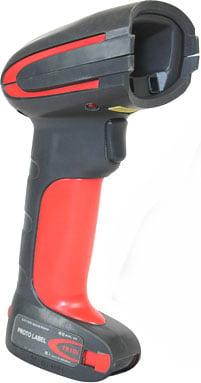 You often hear manufacturers reference ESD when discussing scanners. In fact, on the Honeywell Granit datasheet you’ll see under the “Environmental†section on the back: ESD. ±20Kv air discharge, ±8KV contact discharge
You often hear manufacturers reference ESD when discussing scanners. In fact, on the Honeywell Granit datasheet you’ll see under the “Environmental†section on the back: ESD. ±20Kv air discharge, ±8KV contact discharge
What does it mean and why is it important?
- ESD – electrostatic discharge – is the sudden flow of electricity between two objects resulting from two conditions:
- Air Discharge. A high electrostatic field between two objects when they are in close proximity.
- Contact Discharge. Direct contact transfer of electricity between two objects at different potentials. This is similar to the above except you are injecting the shock directly into the computer. A typical example of this would be 20KV Air Discharge into a scanner vehicle mount. The mount in turn passes an 8KV shock to the scanner.
- Kv is a kilovolt – or 1,000 Volts. And a volt is…um…a unit of measurement to define voltage. Think of voltage, using a plumbing analogy, as water pressure.
Economical Desktop Label Printing with Honeywell’s PC42t
 Setting the standard in convenience and ease of use, Honeywell’s PC42t brings high quality, affordable label printing to any desktop. Compact enough to fit in any environment while being one of the most user-friendly label printers on the market today makes the PC42t the perfect solution for light-duty labeling in a variety of industries.
Setting the standard in convenience and ease of use, Honeywell’s PC42t brings high quality, affordable label printing to any desktop. Compact enough to fit in any environment while being one of the most user-friendly label printers on the market today makes the PC42t the perfect solution for light-duty labeling in a variety of industries.
Able to print on media up to 4.3″ wide and a host of connectivity options the PC43t can easily be dropped into any environment. Its affordable price and modern features make it a smart solution for the small or medium business looking to improve productivity in label making operations.
Key Features
- An economical solution for light-duty thermal printing applications.
- Supports a wide range of media, including 12.7 mm (1/2 in) or 25.4 mm (1 in) ribbon cores (depending on the model).
- Industry-standard connectivity includes USB host and device, and options for Ethernet, parallel and serial communications.
- Easy to use, with a quick-opening design for media replenishment.
- Supports ESim (EPL), ZSim (ZPL II) and Direct Protocol (DP) print languages for maximum compatibility
Honeywell’s Presentation Mode for Scanners
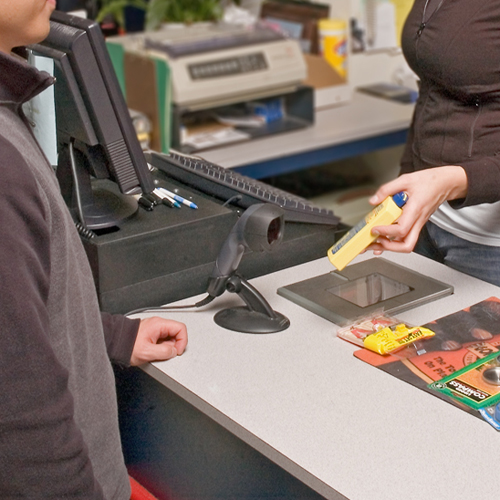 Presentation mode gives customers the ability to scan barcodes without having to squeeze any triggers. You “present†the barcode to the scanner and it scans. Presentation mode uses ambient light and scanner illumination to detect barcodes.
Presentation mode gives customers the ability to scan barcodes without having to squeeze any triggers. You “present†the barcode to the scanner and it scans. Presentation mode uses ambient light and scanner illumination to detect barcodes.
There are two types of Presentation Modes:
- Presentation Mode. In this mode the scanner’s LEDs remain dim until a bar code is presented to the scanner. When a barcode is presented & detected the LEDs turn up, the aimer turns on, and the scanner scans the bar code.  This mode tends to do a better job with bad barcodes.
- Streaming Presentation Mode: The scanner’s LEDs remain fully on and the scanner is always scanning. When a barcode is presented the aimer turns on and the barcode is “scannedâ€. This mode tends to scan good barcodes faster. In Streaming Presentation Mode there is even a Normal flavor and an Enhanced flavor.
- Normal = Good scan speed and the longest working ranges.
- Enhanced = Fastest scan speed but less range.
The Connected Clinician: Revolutionizing Acute Care Nursing
More than any other hospital staff member, nurses have felt the greatest impact to their workflow in support of Meaningful Use requirements and modern healthcare best practices. Ever-increasing government regulations for improved clinical documentation, in combination with a constant flow of new medical devices, have nurses spending more than 30% of their time in non-patient-care activities. Compound this with hospitals being squeezed financially from new government reimbursement laws, and the new reality is that nursing staffs are being reduced while simultaneously being asked to deliver more effective care. This demand for greater nursing efficiency and effectiveness has led to the creation of today’s modern Connected Clinician.
So what exactly is the Connected Clinician and what is enabling him or her to be more effective and efficient than ever before? The answer rests in new clinical mobile applications running on true Clinical Smartphones. Every leading Electronic Medical Records (EMR) software provider and specialty clinical software company is racing to release new mobile versions of their proven workflow applications to support the growing demand for greater mobility within the hospital. Applications such as vitals collection, meds administration, specimen collection, alarm management, nurse call and most importantly, care team communication are in the greatest demand. Reference apps that provide nurses and other clinical staff easy access to electronic drug data and dose safety information, such as eBroselow SafeDose, or medical dictionaries and disease reference guides, are very common as well.
Continue reading »
Identifying your Barcode Symbology Type with a Honeywell Xenon of Granit Series Scanner
If you have trouble identifying your barcode types (like me) – here is a trick for you.
- Plug your scanner into your PC.
- Turn on Word.
- Go to page 199 of your Xenon/Granit User’s Guide and scan that barcode titled “Add Code I.D Prefix to All Symbologies (Temporary)â€
- Then scan the barcode in question.
- You’ll see a character in front of the scanned data on your Word doc (or any app that displays scanned data).
- Go to the section of the chart below (Linear, 2D, Postal) then to the fourth column titled “ID†under Honeywell; find your symbol; and your barcode type is in the first column – Symbology.  This chart is also in the back of the Xenon/Granit User’s Guide.
Note: This setting is temporary and will be removed when the unit is power cycled.
Honeywell’s Captuvo Enterprise Sleds for Apple Devices
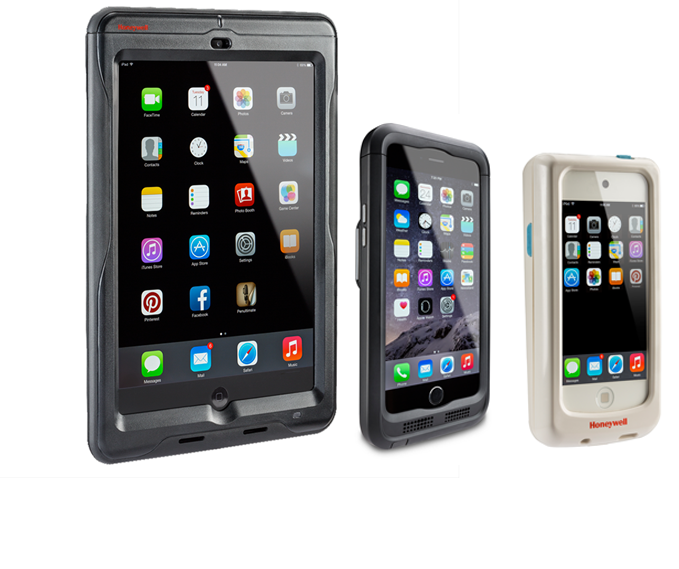 Empowering your mobile workforce has become a primary concern for almost every business today. From the warehouse and delivery destinations to the retail sales floor and patient bedside, having access to critical information on a mobile device that is easy to use and can handle the rigors of daily use is key to a capable, efficient workforce.
Empowering your mobile workforce has become a primary concern for almost every business today. From the warehouse and delivery destinations to the retail sales floor and patient bedside, having access to critical information on a mobile device that is easy to use and can handle the rigors of daily use is key to a capable, efficient workforce.
Many businesses are looking to the familiar Apple devices (iPhone, iPad, iPod) as viable solutions due to their familiar interface that their employees are often already familiar with. Utilizing these devices mean less time training and easier integration into the company’s workflow. The biggest hurdle with the Apple products in enterprise applications is the lack of durability and capable barcode scanner or magnetic stripe reader. This is where Honeywell’s Captuvo line can take your Apple device from a standard consumer device to an enterprise-grade mobile computer.
Finding Honeywell’s Vuquest Scanner In More Places Than You’d Expect
 I took a Southwest Airlines flight last week and was delighted to see that they use the Honeywell Vuquest 3310g to scan boarding passes. So I started thinking – the humble Vuquest (2D Area Imager) doesn’t get enough press – probably because it finds itself inside things, or under things or behind things.
I took a Southwest Airlines flight last week and was delighted to see that they use the Honeywell Vuquest 3310g to scan boarding passes. So I started thinking – the humble Vuquest (2D Area Imager) doesn’t get enough press – probably because it finds itself inside things, or under things or behind things.
Below are just a few examples of where you’ll find the Vuquest. So don’t forget about it when solving your customer’s scanning problems. Thank of it as a Xenon in a smaller more compact, easily mounted form.
- Southwest Airlines. Scanning boarding passes.
- Law Enforcement. Electronic Ticketing / eCitation solution. Vuquest is inside the below device in the officer’s hand.
- One of the largest convenience store chains uses them inside their “loyalty kiosks†to scan loyalty cards. Kiosks are a classic use case.
- A European grocer with a significant presence in the US uses 3310’s at checkout to scan loyalty cards and in their self-checkout lanes to scan the final barcode off of mobile device used in their “scan as you go†application.
- A very large hamburger chain is putting the Vuquest into their in-store McKiosks.
- An extremely large online retailer that seems to be delivering packages to my house daily uses them to read bin license plates in their picking application and inside robots to read 2D codes on their floors for guidance in their warehouse.
- The 2nd largest grocery chain uses them in their pharmacies to scan bottles of pills and filled prescriptions. Another classic use case for the space saving Vuquest
- A large Midwest based vending machine company puts them in open unmanned vending kiosks to scan employee’s employee ID card.
For assistance learning how a Vuquest 3310g can fit your needs, contact us at BarcodesInc.
“Lux” Explained for Barcode Scanning
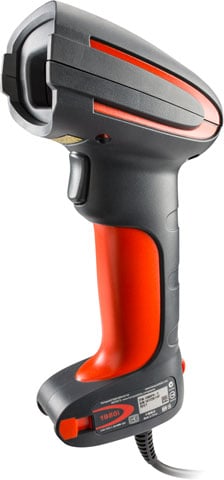 The Granit user guide has a performance chart that says – “Granit 1980i/1981i Scanner Typical Performance (200 lux).  So what is this “lux†thing?
The Granit user guide has a performance chart that says – “Granit 1980i/1981i Scanner Typical Performance (200 lux).  So what is this “lux†thing?
Lux is the amount of ambient light in the area. A full sun, no clouds in the sky, summer day would be considered about 100,000 Lux. A completely dark area with no ambient light at all would be 0 Lux. A typical office environment is usually between 500 – 700 Lux. Granit scanner are used typically in a warehouse which are usually dimmer than offices. It would be safe to say that a warehouse would measure about 200 Lux of ambient lighting.



